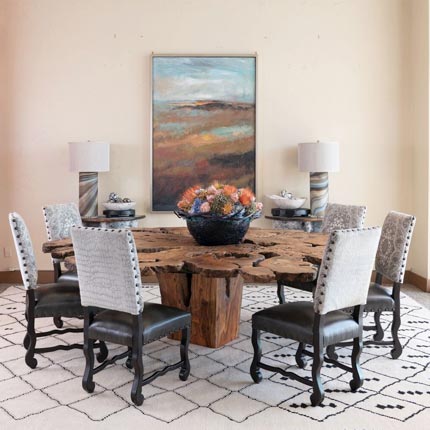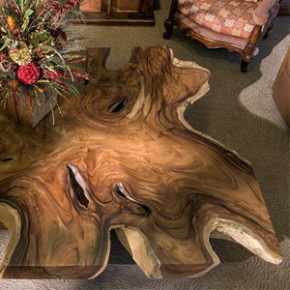If you were going to compare services of Interior Designer vs Designer vs Interior Decorator, you would be a little overwhelmed. The comparison is thousands of pages, but in an effort to clarify the similar/dissimilar aspects, here we go.
Interior Designer
The Interior Designer is typically top of the totem pole, as the educational qualifications and technical knowledge needed is very clear. Interior designers are educated in Interior Design and maintain educational credits each year in order to maintain that standing. Their work involves color study, fabric knowledge, space planning, furniture design, CAD (computer aided design), technical spec reading, city and state code standards and more. They work with architects and builders and high-end residential clients.
What is Interior Design
Interior design is understanding how the architects, builders or property owners are going to use a space. Interior Designers design space efficiently inside of the four walls, which may include electrical, plumbing, flooring, ceiling, walls, windows, electronics, furniture, and kitchen systems. They can help develop the budget and have resources in place to ensure the end product is finished to their standards.
Why Do You Hire Interior Designers
You hire them for their expertise and professional contacts and also for the ‘style’ that they are known for which you see during your interview with them. They have resources for the uniqueness, quality and design and can save hours of research. They act as a guide and help in the decisions making process, as they know the requirements and time lines of items like lighting. So they prepare the way with edited selections to prevent confusing and possibly overwhelming the client during the process of building or remodeling.
Various interior designers specialize in surfaces: flooring, walls, doors, granites, marbles, cabinets, fixturing in faucets and lighting and will work in furnishings. Other Interior Designers specialize in furnishings and don’t necessarily enjoy the working in surfaces and take on the role of decorating.
Cost Variables
What does something like this cost? It varies as the taste level is different for each project. Some projects have budget constraints and others may say they do not. With guidance your professional Interior Designer will help you understand the total cost of the interiors as well as the furnishings and will help prevent “change orders” which add additional unplanned costs.
What is important during a project is respect and compatibility you find with any professional. This is the person who will accomplish what you want and hopefully exceed expectations. Very important to be on the same page and have a commonality between you. It will cost you more, if you continually feel that the options presented to you are not what your vision is.
Time Line
It can be a lengthy process, so starting a year before a project is scheduled for completion is not too soon. It takes that length of time to plan and execute the detailed installation. If you wait until the end of the project, you will feel that panic that you won’t be able to move in because furniture has not been planned. Clients may think that their project is 3 months, 6 months from completion and they feel it’s too soon to purchase. Not so. It’s almost too late, somewhat like the rabbit in Alice in Wonderland: “I’m late, I’m late, I’m late”.
I like to say that the architects design the “bones” of the building or space and the interior designer ‘fleshes’ it out: the very best work together to create something greater and it is a partnership of design and function and that makes it work. The Interior Designer designs must adhere to code and regulatory requirements and be mindful of the sustainability requirements or goals. Will they work within a budget. The interior design process is systematic and includes analysis, research to satisfy the needs and resources of the client.

Coffee/Cocktail
Interior Decorator – Design Decorator – Designer
Interior Decorator, Design Decorator or Designer are varying titles for those who assist in determine the look and feel of a client’s space. It is determining the aesthetics, with paint, textiles and furnishing the space with beautiful or fashionable items within the functionality of the room. Let’s say the Interior Decorator may recommend changing the layout of the furniture, but does not tend to design: their focus is the look and feel of the room.
Many professional Interior Decorators have college degrees in related fields, but it’s not a requirement for the profession. Much more client time is involved meeting directly with your Interior Decorator to get a sense of how they feel about the space and intended usage. There are no educational requirements to be a Design Decorator/Interior Decorator/Designer. Whereas Interior Designers may decorate, but design decorators or interior decorators don’t design.
Designers will have a flat fee or hourly rate for your project falling in the $125 to $225 for entry level jobs, higher end decorators charge $235-$375 per hour and luxury decorators can change upwards of $500 per hour. Expect to pay cost plus markup on materials up to 45%.
Why Hire a Professional
That being said, making decisions, possibly hundreds of decisions, over a lengthy amount of time, requires someone be in charge and have the vision of your project. It is imperative you like your professionals style and personality. It doesn’t matter what your education is if you don’t get along: you need to feel you have a partner in your project that is attentive and on your side. If you have that instantaneous feeling of like/dislike pay attention and trust it. Another very very important thing is to ask for references, soak up the long list of references and accolades that you are provided, dig down on your questions. You are looking for solutions, vision and possibly quick resolutions.
Is it a beauty contest? A latest greatest? Be mindful. You are looking for credentials of trust, reliability, compatibility and that you have your needs met and exceeded: it prevents resentments and mistakes. It’s not about catch phrases… “blue skies” “we got this” “new best friend”– it’s about you really getting the full attention and guidance of any professional and that you get along. Long after the process, it’s important you have a home that you are in love with for years to come.